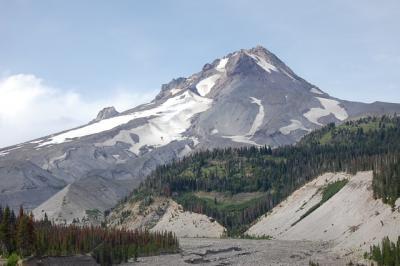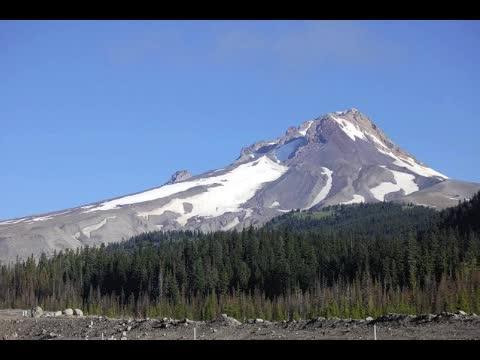Forecasts of when a volcano is ready to erupt could be a little closer thanks to work bygeologists at the University of California, Davis, and Oregon State University published online Feb.16 in the journal Nature.
For an eruption to occur, the magma, or molten rock under the volcano must be sufficientlymobile to erupt.
"The question is, what percentage of time is the magma in an eruptible state?" said KariCooper, associate professor in the Department of Earth and Planetary Sciences at UC Davis and leadauthor on the paper.
"People think about there being this big reservoir of liquid magma under a volcano, but wedon't think it's in that state all the time," she said.
The mobility of the magma depends on the amount of crystallization: When it is more thanabout 50 percent crystalline, it becomes immobile. Crystallization, in turn, depends on thetemperature of the rock.
Until now, volcanologists have not known how common it is for magma to be crystallinecompared to being mobile and eruptible. The new work shows that at least for Mount Hood, Ore., themagma is mobile less than 10 percent, and perhaps as little as 1 percent of the time.
Cooper and Adam Kent, professor of geology at Oregon State University, studied rocks ejectedfrom previous eruptions at Mount Hood. By analyzing both radioactive isotopes and the distributionof trace elements, they were able to reconstruct the history of the rocks and the conditions towhich they had been exposed before they were erupted from the volcano.
The results mean that volcanologists might be able to better assess when a volcano is readyto erupt by using seismic or other remote imaging to look for mostly liquid magma, Cooper said. Iferuptible magma is indeed relatively rare, then when it does appear, the risks of an eruption arehigher, she said.
Mount Hood is so far the only volcano studied in detail using these techniques. A preliminarysurvey of data from similar volcanoes around the world shows that they likely follow a similarpattern to Mount Hood, with mobile, "eruptible" magma only being present a small proportion of thetime. Cooper and Kent plan further studies to see if these discoveries are widely applicable orunique to Mount Hood.

Rocks ejected from Mt. Hood show that the magma under the volcano has been liquid enough to erupt for less than 10 percent of the last 20,000 years. If generally true, this could have implications for understanding when a volcano is most ready to erupt.
(Photo Credit: Eric Klemetti, Denison University)

UC Davis volcanologist Kari Cooper talks about new studies of the magma reservoir under Mt. Hood, which could lead to a better understanding of volcanic activity and when volcanoes are most likely to erupt.
(Photo Credit: Video by Andy Fell. Still images by Erik Klemetti, Denison University and the U.S. Geological Survey collection.)
Source: University of California - Davis